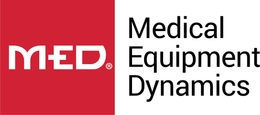Severe weather events—whether hurricanes, floods, snowstorms, or heatwaves—can cause devastating disruptions to healthcare systems. One of the most critical areas at risk during such emergencies is medical equipment. From diagnostic imaging systems to life-sustaining ventilators, the functionality of these devices is essential for patient survival and continuous care. In this comprehensive guide, we’ll explore best practices to protect medical devices, ensure operational continuity, and plan for resilient healthcare delivery in extreme conditions.
Understanding the Impact of Severe Weather on Healthcare Technology
Natural disasters are increasing in frequency and intensity due to climate change. These events can disrupt healthcare infrastructure in multiple ways:
- Power Outages: Sudden loss of power can incapacitate critical care equipment, leading to delayed treatments or catastrophic failures.
- Water Intrusion: Floodwaters can enter healthcare facilities, damaging sensitive electronics and increasing the risk of contamination and corrosion.
- Physical Damage: High winds, falling debris, and structural collapses can destroy or compromise devices.
- Access Barriers: Disrupted transportation networks can prevent the delivery of replacement parts or service technicians.
Emergency Preparedness Planning for Medical Devices
Proactive emergency planning is vital to minimize damage and maintain continuity of care. A robust emergency preparedness strategy should include the following components:
1. Comprehensive Risk Assessment
Healthcare facilities should assess their vulnerability to various natural disasters based on geography, facility design, and operational dependencies. A facility in a coastal zone, for example, must prepare for hurricanes, whereas a mountain region might prioritize blizzard readiness.
2. Equipment Inventory and Classification
Maintain a digital inventory of all medical devices, including make, model, serial numbers, software versions, and maintenance records. Classify equipment by criticality: life-supporting, diagnostic, or ancillary. This prioritization helps focus emergency efforts on the most vital assets.
3. Establishing a Disaster Response Team
Create a multidisciplinary emergency response team that includes biomedical engineers, IT specialists, clinical staff, and facility managers. Each member should understand their role during a weather-related emergency and receive routine training and drills.
4. Continuity of Operations Plan (COOP)
A COOP outlines how your facility will continue essential functions under a range of emergency scenarios. Include clear procedures for safeguarding medical devices, switching to backup systems, communicating with staff and patients, and initiating post-disaster recovery.
Power Continuity Strategies for Medical Devices
Ensuring uninterrupted power is one of the most important aspects of disaster preparedness for medical facilities.
1. Backup Generators
Install high-capacity backup generators that automatically activate in case of a power failure. Generators should be tested regularly, fueled adequately, and located in areas protected from flooding or debris impact.
2. Uninterruptible Power Supplies (UPS)
UPS systems offer short-term energy to bridge the gap between power loss and generator activation. These are especially important for delicate diagnostic equipment and IT systems that need time for safe shutdowns.
3. Redundant Power Paths
Design electrical systems with redundant power circuits and failover mechanisms to prevent total power loss in specific zones of the facility.
Mitigating Water Damage to Equipment
Flooding can occur from hurricanes, broken pipes, or torrential rain. Preventative steps include:
1. Equipment Elevation
Place critical equipment on raised platforms or install them above ground level, especially in flood-prone basements or first floors.
2. Waterproof Enclosures and Barriers
Utilize waterproof housing for portable or stationary equipment. Temporary water barriers such as sandbags can also be deployed during forecasted storms.
3. Environmental Monitoring
Install sensors to monitor for humidity, water intrusion, and temperature fluctuations. These systems can provide early warnings and automated alerts for intervention.
Securing Medical Devices During Storms and Disasters
Severe weather events can cause devices to be damaged by impact, vibration, or collapse. Preventative steps include:
1. Anchoring and Bracing
Secure large equipment to walls or floors using seismic anchoring kits. Ensure that wheels on mobile devices have functional locking mechanisms.
2. Protective Casings and Padding
Place devices in padded, shock-resistant enclosures during transport or when moved for safety. Keep spare casings and covers in emergency storage kits.
3. Relocation Procedures
Develop relocation protocols to move mobile units like infusion pumps or portable ventilators to safe zones quickly. Identify sheltered areas within the facility ahead of time.
Leveraging Technology for Disaster Resilience
1. Remote Monitoring and Control
Use IoT-connected medical devices to monitor equipment status and health remotely. During severe weather, this allows staff to make informed decisions without physical presence.
2. Predictive Maintenance with AI
AI-driven software can predict equipment failures and maintenance needs based on usage data and environmental conditions. Implementing predictive systems reduces the chance of a device breaking during a critical moment.
3. Cloud-Based Data Backup
Ensure that all patient and equipment data is backed up in the cloud. This allows for seamless continuation of care if local IT infrastructure fails.
Case Study: Hurricane Helene and Hospital Resilience
In 2024, Hurricane Helene made landfall along the southeastern United States with winds exceeding 110 mph and widespread flooding. Despite catastrophic conditions, several hospitals remained fully functional due to meticulous preparedness. One regional medical center had previously invested in waterproof server rooms, elevated generators, and mobile emergency kits for ventilators and infusion pumps.
Staff had participated in quarterly emergency drills and were able to quickly transition patients to safer zones within the hospital. Remote monitoring systems allowed IT teams to manage device integrity from off-site locations, and AI-based maintenance alerts helped prevent several equipment failures. Lessons from this event have shaped emergency policies nationwide.
Post-Event Recovery and Evaluation
After a severe weather event, focus turns to recovery and evaluation. Steps include:
- Inspection and Testing: Evaluate all devices for water or impact damage before returning them to service.
- Insurance Documentation: Use your inventory records and photographic evidence to file accurate insurance claims.
- Staff Debriefing: Conduct post-incident reviews to improve future response strategies.
- Regulatory Reporting: Report any equipment failures or adverse events to the appropriate regulatory agencies.
Conclusion: Building a Culture of Preparedness
Protecting medical devices during severe weather is not just about physical safeguards—it's about fostering a culture of preparedness. With the right mix of planning, technology, and training, healthcare facilities can continue delivering lifesaving care even in the harshest conditions. By investing in resilient infrastructure and emergency protocols today, organizations ensure safety and sustainability for the future.

